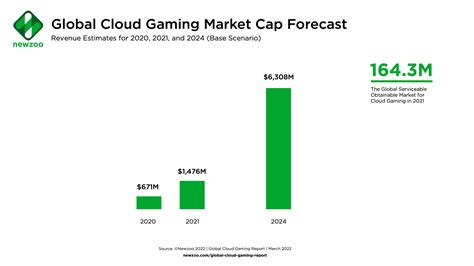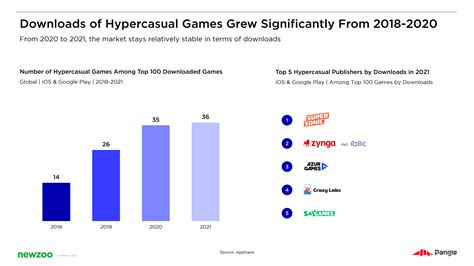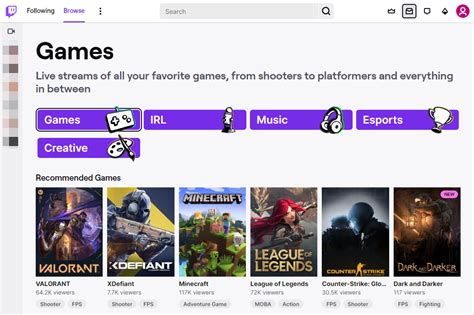Breaking News


Popular News


Stay up to date with the latest trends in mobile gaming including AR/VR, blockchain integration, cloud gaming, hyper-casual games, game streaming, and in-game advertising. Embrace the future of gaming!Mobile gaming has come a long way since the days of Snake and Tetris on our old flip phones. In today’s fast-paced world, the mobile gaming industry is constantly evolving and adapting to meet the demands of an ever-growing market. From the integration of cutting-edge technologies like AR and VR to the innovative use of blockchain and cloud gaming services, there are a number of emerging trends shaping the future of mobile gaming. In this blog post, we will explore some of the most exciting developments in the industry, including the rise of hyper-casual games, advancements in game streaming platforms, and the increasingly creative in-game advertising strategies being employed by developers. Join us as we take a closer look at the latest trends and innovations that are revolutionizing the world of mobile gaming.
Contents

The increased demand for AR and VR games in the mobile gaming industry is undeniable. As technology continues to advance, more and more players are looking for immersive experiences that can be provided by augmented reality (AR) and virtual reality (VR) games. These games allow users to interact with the real world in new and exciting ways, creating a more engaging and entertaining gaming experience.
One of the key reasons for this surge in demand is the growing availability of AR and VR technology in mobile devices. With the release of devices such as the Oculus Quest and the iPhone X, more and more users have access to high-quality AR and VR experiences right in the palm of their hands. This accessibility has led to an increase in the number of AR and VR games being developed and released for mobile platforms, catering to the growing demand from players.
Furthermore, the success of popular AR games like Pokemon Go has demonstrated the immense potential for AR and VR games in the mobile gaming market. The success of such games has captured the attention of both developers and players alike, driving the innovation and development of new AR and VR games that offer unique and captivating experiences.
As the technology continues to improve and become more accessible, it is expected that the demand for AR and VR games in the mobile gaming industry will only continue to grow, shaping the future of mobile gaming in exciting new ways.

One of the emerging trends in mobile gaming is the integration of blockchain technology. This technology has the potential to revolutionize the gaming industry by enabling secure and transparent transactions, as well as providing gamers with unique ownership and control over their in-game assets.
By utilizing blockchain technology, game developers can create decentralized gaming platforms that offer players a more immersive and fair gaming experience. This technology also allows for the creation of non-fungible tokens (NFTs), which can be used to represent in-game items, characters, and other digital assets.
Furthermore, the integration of blockchain technology in mobile games can also facilitate the development of unique gameplay features, such as decentralized in-game economies and player-driven content creation. This can lead to a more dynamic and engaging gaming experience for players, as well as new opportunities for monetization for developers.
| Benefits of Integrating Blockchain Technology in Mobile Games |
|---|
| Enhanced security and transparency |
| Opportunities for unique ownership and control over in-game assets |
| Creation of non-fungible tokens (NFTs) for digital assets |
| Development of decentralized gaming platforms |
| Facilitation of new gameplay features and monetization opportunities |
Overall, the integration of blockchain technology in mobile gaming has the potential to transform the industry by providing players with new levels of ownership and control over their in-game assets, as well as creating new opportunities for developers to innovate and monetize their games.

One of the emerging trends in the mobile gaming industry is the growth of cloud gaming services. Cloud gaming, also known as gaming on demand, is a type of online gaming that allows direct and on-demand streaming of games onto devices such as smartphones, tablets, and computers. This technology eliminates the need for high-end hardware, as the processing power is provided by remote servers. Users can access a library of games without the need for downloads or installations, making gaming more accessible and convenient.
Cloud gaming services utilize advanced internet technology, enabling seamless gameplay without the limitations of device specifications. With the rise of 5G networks, the potential for cloud gaming to reach a wider audience is increasing. As more players seek flexibility and convenience in their gaming experiences, the demand for cloud gaming services continues to grow, leading to the expansion of platforms and offerings in the market.
The integration of cloud gaming with mobile devices has transformed the way players engage with games. Players can now enjoy high-quality, console-like gaming experiences on their mobile devices, regardless of the device’s processing power. This shift towards cloud gaming services is revolutionizing the gaming industry, paving the way for new business models and opportunities for game developers and publishers.
| Benefits of Cloud Gaming Services | Challenges in Cloud Gaming Adoption |
|---|---|
|
|
Overall, the growth of cloud gaming services signifies a significant shift in the gaming landscape, offering new possibilities for players and reshaping the way games are developed, delivered, and experienced. As technology continues to advance, the potential for cloud gaming to become a dominant force in the industry is becoming increasingly apparent, with implications for the future of mobile gaming and beyond.

Hyper-casual games have become increasingly popular in the mobile gaming industry, with their simplistic gameplay and addictive nature appealing to a wide audience. These games are designed to be easy to pick up and play, requiring minimal time and effort from the player. The rise of hyper-casual games can be attributed to the growing demand for entertainment on the go, as well as the increased accessibility of smartphones and tablets.
One of the key factors driving the popularity of hyper-casual games is their focus on quick, satisfying gameplay experiences. With limited time to spare, many players are drawn to these games for their ability to provide instant gratification. Additionally, the simplicity of hyper-casual games makes them suitable for players of all ages and gaming levels, further expanding their appeal.
The success of hyper-casual games has also been fueled by the rise of social media platforms, which serve as powerful channels for their promotion. Developers have leveraged social media to reach a larger audience, driving higher download numbers and increasing player engagement. As a result, hyper-casual games have become a staple in the mobile gaming market, with a steady stream of new titles being released.
As the mobile gaming industry continues to evolve, the rise of hyper-casual games is set to persist, offering players a convenient and enjoyable gaming experience. With their simple yet addictive gameplay, these games have carved out a significant presence in the gaming market and are expected to remain a dominant force in the years to come.

Game streaming platforms have seen a significant surge in popularity in recent years, with advancements in technology and internet infrastructure making it easier than ever for players to stream and share their gameplay with others. Whether it’s through platforms like Twitch, YouTube Gaming, or even Facebook Gaming, the ability to broadcast your gameplay to a wide audience has become an integral part of the gaming experience.
One of the key advancements in game streaming platforms has been the integration of interactive features, allowing viewers to engage with the streamer in real-time. This can include things like live chat, polls, and even direct interactions within the game itself. These interactive elements have helped to create a more immersive and engaging experience for both the streamer and their audience.
Another advancement in game streaming platforms is the rise of cloud-based gaming services, which allow players to stream games directly from the cloud, without the need for high-end hardware. This has opened up streaming to a much broader audience, as players no longer need to invest in expensive gaming rigs to share their gameplay with others.
Furthermore, the development of dedicated streaming apps and platforms for mobile devices has made game streaming more accessible than ever. With the ability to stream games directly from their smartphones or tablets, players can now share their gameplay from anywhere with an internet connection, further expanding the reach and popularity of game streaming platforms.

Advertising within mobile games has become increasingly innovative as developers and marketers seek new ways to engage with players. One strategy that has gained popularity is native advertising, which seamlessly integrates brands and products into the game environment. This type of advertising feels less intrusive to players and can be more effective in capturing their attention.
Another trend in in-game advertising is the use of rewarded video ads, where players have the option to watch an ad in exchange for in-game rewards or bonuses. This not only provides value to the players but also ensures that the ads are being actively viewed, leading to higher engagement and conversion rates for advertisers.
Furthermore, with the increasing popularity of influencer marketing, developers are partnering with popular gamers and content creators to feature branded content within their games. This form of advertising leverages the influencer’s credibility and reach to promote products to a highly targeted and engaged audience.
Lastly, the use of dynamic in-game advertising is on the rise, allowing for real-time, contextually relevant ads to be delivered within the game. This ensures that the advertising content remains fresh and tailored to the individual player, maximizing the impact of the ads.

What are the emerging trends in mobile gaming?
Emerging trends in mobile gaming include augmented reality games, cloud gaming, and cross-platform multiplayer experiences.
How is augmented reality changing the mobile gaming industry?
Augmented reality is bringing immersive and interactive gaming experiences to mobile devices, allowing players to interact with the real world while playing games.
What is cloud gaming and how is it impacting the mobile gaming market?
Cloud gaming enables players to stream games over the internet without the need for high-end hardware, making high-quality gaming accessible on mobile devices.
Why are cross-platform multiplayer experiences becoming popular in mobile gaming?
Cross-platform multiplayer games allow players on different devices to play together, breaking down the barriers between mobile, console, and PC gaming.
How are mobile game developers leveraging new technologies to enhance player experiences?
Developers are integrating features such as artificial intelligence, machine learning, and real-time communication to create more engaging and personalized gaming experiences.
What impact are emerging trends in mobile gaming having on the traditional gaming industry?
The rise of mobile gaming trends is blurring the lines between traditional gaming platforms, leading to new opportunities for collaboration and innovation in the gaming industry.
What do the emerging trends in mobile gaming mean for the future of the gaming industry?
The evolving landscape of mobile gaming is shaping the future of the gaming industry, driving the development of new technologies, business models, and gaming experiences.